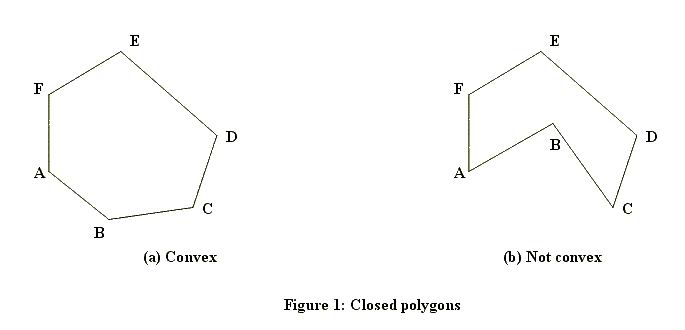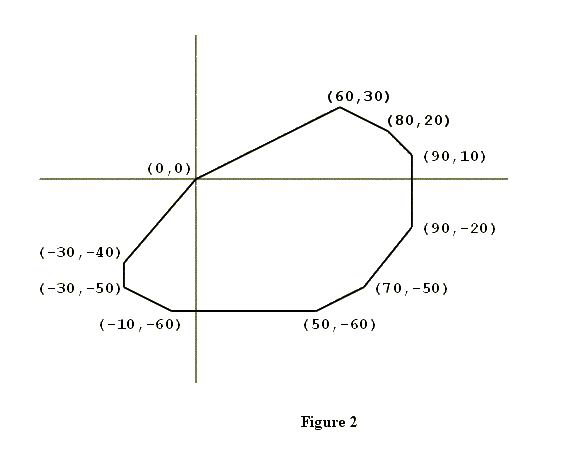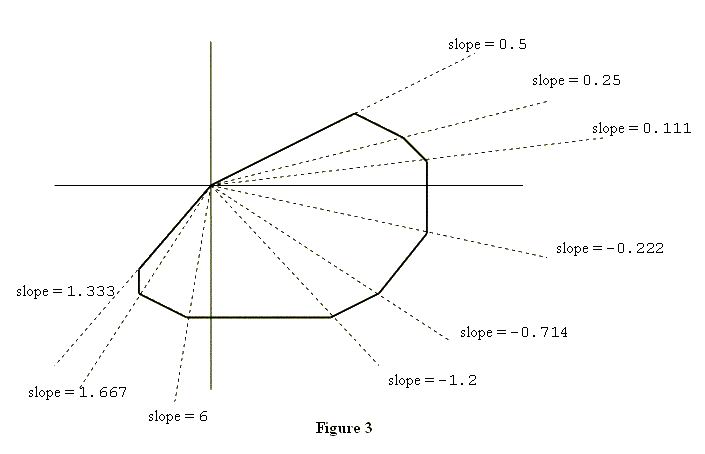| Time Limit: 1000MS | Memory Limit: 30000K | |
| Total Submissions: 7703 | Accepted: 3673 |
Description



Input
Output
Sample Input
0 0 70 -50 60 30 -30 -50 80 20 50 -60 90 -20 -30 -40 -10 -60 90 10
Sample Output
(0,0) (-30,-40) (-30,-50) (-10,-60) (50,-60) (70,-50) (90,-20) (90,10) (80,20) (60,30)
Source

1 /************************************************************************* 2 > File Name: code/poj/2007.cpp 3 > Author: 111qqz 4 > Email: rkz2013@126.com 5 > Created Time: 2015年11月08日 星期日 19时35分54秒 6 ************************************************************************/ 7 8 #include<iostream> 9 #include<iomanip> 10 #include<cstdio> 11 #include<algorithm> 12 #include<cmath> 13 #include<cstring> 14 #include<string> 15 #include<map> 16 #include<set> 17 #include<queue> 18 #include<vector> 19 #include<stack> 20 #include<cctype> 21 #define fst first 22 #define sec second 23 #define lson l,m,rt<<1 24 #define rson m+1,r,rt<<1|1 25 #define ms(a,x) memset(a,x,sizeof(a)) 26 using namespace std; 27 const double eps = 1E-8; 28 const int dx4[4]={1,0,0,-1}; 29 const int dy4[4]={0,-1,1,0}; 30 typedef long long LL; 31 const int inf = 0x3f3f3f3f; 32 const int N=55; 33 int cnt; 34 int dblcmp(double d) 35 { 36 return d<-eps?-1:d>eps; 37 } 38 struct point 39 { 40 double x,y; 41 point(){} 42 point(double _x,double _y): 43 x(_x),y(_y){}; 44 bool input() 45 { 46 return scanf("%lf %lf",&x,&y)!=EOF; 47 } 48 point operator - (const point &p)const 49 { 50 return point(x-p.x,y-p.y); 51 } 52 53 double operator^(const point &p)const 54 { 55 return x*p.y-y*p.x; 56 } 57 }p[N]; 58 59 bool cmp(point a,point b) 60 { 61 point c; 62 c.x=0.0; 63 c.y=0.0; 64 double tmp =(a-c)^(b-c); 65 // cout<<"tmp:"<<tmp<<endl; 66 return tmp>0; 67 } 68 int main() 69 { 70 #ifndef ONLINE_JUDGE 71 freopen("in.txt","r",stdin); 72 #endif 73 cnt = 0 ; 74 while (p[cnt].input()) cnt++; 75 76 sort(p+1,p+cnt,cmp); 77 for ( int i = 0 ; i < cnt ; i++) printf("(%.0f,%.0f)\n",p[i].x,p[i].y); 78 79 80 81 #ifndef ONLINE_JUDGE 82 #endif 83 fclose(stdin); 84 return 0; 85 }
poj 2007 Scrambled Polygon (极角排序模板题)
原文:http://www.cnblogs.com/111qqz/p/4948009.html